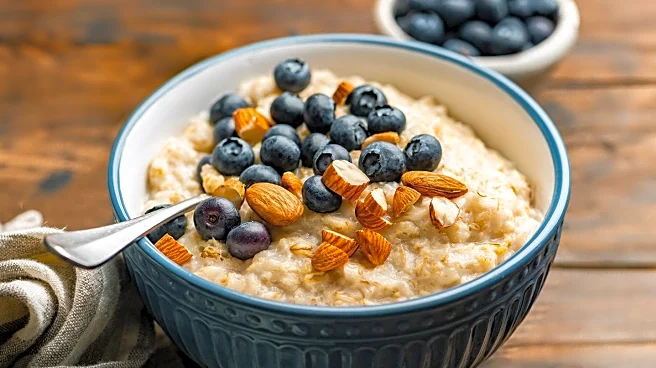What's Happening?
A recent study by Consumer Reports has revealed concerning trends in breakfast cereals marketed to children, showing increased levels of sugar, salt, and fat while nutrients like protein and fiber have decreased. The study analyzed cereals launched between 2010 and 2023, targeting children aged 5 to 12. Findings indicate that a single serving of these cereals contains nearly three teaspoons of sugar, accounting for about 45% of the daily added sugar limit recommended by the American Heart Association for children. Amy Keating from Consumer Reports advises parents to carefully check nutrition labels and opt for cereals with whole grains as the primary ingredient, aiming for less than six grams of added sugar per serving. She suggests mixing sugary cereals with lower-sugar, higher-fiber options to balance nutrition.
Why It's Important?
The findings underscore the growing health concerns related to children's diets, particularly the impact of high sugar consumption on long-term health. With childhood obesity and related health issues on the rise, the study highlights the need for parents to make informed choices about breakfast cereals. The report suggests that while cereals are a convenient breakfast option, selecting healthier versions can help stabilize blood sugar levels and prevent overeating later in the day. This issue is significant for public health policy, as it may influence regulations on food marketing and nutritional standards for products aimed at children.











